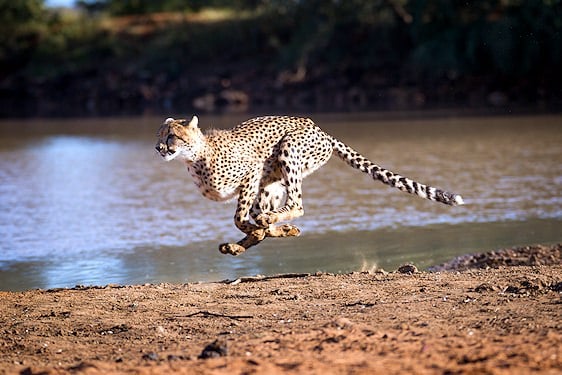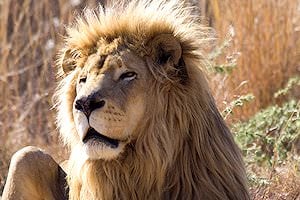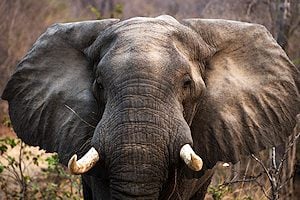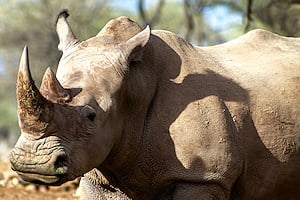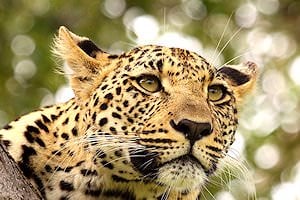Elephant
The African elephant is part of the continent's captivating Big Five animals and is always a memorable sight on safaris in the wilderness of Africa.
Need Advice?- Home
- >>
- African Travel
- >>
- South Africa
- >>
- National Parks
- >>
- Kruger National Park
- >>
- Mammals
- >>
- Elephant
Description
The African Elephant is the largest land mammal on Earth, reaching weights of up to 6 tonnes. They are easy to spot, with their trunks and big ears being their most identifiable characteristics. Elephants almost always have tusks.

They are found throughout Southern Africa in scattered protected regions of Botswana, South Africa, and Namibia, and more north towards Zambia, Kenya, and Tanzania, as well as on the edge of the Sahara Desert. National parks of Botswana, such as the Chobe National Park and the Kruger National Park in South Africa, are some regions where the population flourishes. An overabundance of elephants in a given area is devastating, changing the natural landscape entirely within a few decades.
Best Safari Tours for viewing Elephant
This safari package allows you to view elephants in three distinct safari areas in South Africa.
The wilderness areas of Botswana are home to the largest concentrations of elephants in Africa. This package explores these areas.
This short private safari visits Kruger National Park in the company of a knowledgeable guide.

Status
The conservation status has declined, with elephants now classified as near endangered or threatened. It may be due to continued habitat loss and the enormous amount of vegetation and water required for their survival in the arid African wilderness, along with the negative impact that the ivory trade in the 20th century has had on them. Their populations in Southern Africa are stable. Increasing human populations in North Africa, greater water use by humans, and climate change have made the seasonal migration of these "desert elephants" harder with each passing year, reducing their numbers and ability to survive in this already hostile environment. Their current population is around 470 000 in the whole of Africa, though most of these are in Southern Africa, with Botswana having the most significant population.

Habitat
Elephants are highly adaptive and, as a result, can be found in a wide range of very different environments, from the edge of the Sahara desert to the tropical forests of the Congo, where a distinct subspecies of the African elephant started evolving in the last 10 000 years. The Kruger National Park is home to the subspecies referred to as the "savanna elephant". The reasonably wide diet of elephants enables them to inhabit the whole park, with no one biome or habitat boasting to be "the" place to find them. One thing that does restrict elephant populations is the amount of water and food they need on a daily basis. Their massive size means they can drink up to 600 liters of water a day, while they are also able to eat as much as 7% of their total body weight in a given day – that is up to 420kg of food a day. A stretch of land can only support a herd of elephants for a limited period. It is also why an overly high elephant population can be devastating, as seen in some protected areas in Botswana, and even parts of the Kruger National Park, where the high elephant populations have altered the environment.

Social Organization
Elephants, like antelope and other herbivores, are organized in herds. They are led by a dominant female, known as a matriarch – typically the oldest female. These herds are like families, with the members usually closely related and mostly female or juvenile, with adult males living a more solitary life. The matriarchs of the herds in the north of Africa, the so-called "desert elephants," play a more significant role in the herd's survival than in the south. They are responsible for navigating the herd on their migration to new water sources in the dry season, and then back again in the rainy season – a bad navigator could mean the death of the entire herd. In steady rainfall areas of Southern Africa, however, the role of the matriarch is somewhat less dire. She is responsible for coordinating the movements and ensuring the herd's safety but does not require the technical ability of her fellow leaders up north.
Finest Safari Areas in Africa for Encountering Elephant
We recommend the following National Parks and Private Reserves for the best chances of spotting the elephant on safari game drives and bush walks.

Social Behavior
Elephants are among the most intelligent animals in the world, especially compared to their fellow land herbivores. Like dolphins, apes, and even humans, elephants can feel and display complex emotions like sadness, happiness, excitement, and annoyance. As a result, they are very attached to their immediate family and experience intense grief at the loss of a loved one. Herds of elephants are known to return to their dead in an almost spiritual act, showcasing their fantastic memory. This same memory is what allows matriarchs to remember migration routes hundreds of kilometers long, year after year. Furthermore, elephants have complex ways of communicating. Their feet can sense vibrations on the surface, allowing them to share by creating a particular sequence of vibrations. Their trunks can sense these vibrations, often during "synchronized freezing." An entire herd will remain dead quiet as they use; they all hold their trunks to the ground. Finally, touching and flapping their ears are also means of communicating ideas to one another and others, in this case, either annoyance, aggression, or excitement.

Reproduction
Male elephants start battling for mates when they reach sexual maturity at around 20. They reproduce well into their forties, usually up to 45. Male elephants, like males of other species, compete for females by fighting, with the losers sometimes getting injured in a classic form of "survival of the fittest." After winning the battle and mating with the female, a male elephant usually stays with the female for a few weeks before looking for another partner, ensuring strong males produce as many offspring as possible to ensure a "stronger" generation. Female elephants carry their young for nearly two years after conception before finally bringing a new herd member into the world. These little elephants will stay with their mother, aunts, and grandmother for the next 20 years before adulthood.

Anti-Predator Behavior
Elephants have very few natural predators, mainly because they are too large for most predators to even think of as prey. Lions have been known to kill elephants on occasion, though this would only happen during exceptional circumstances, and typically only with elephant calves. When lions attempt to attack a member of a herd, the elephants form a circle-like formation to keep calves safe in the middle. Older, stronger members ruthlessly fend off lions, killing a member of the lion pride on occasion. Their strong trunks are a handy weapon and tool in most situations, allowing them to grasp and throw branches and hold on to predators as they attempt to trample on them.




